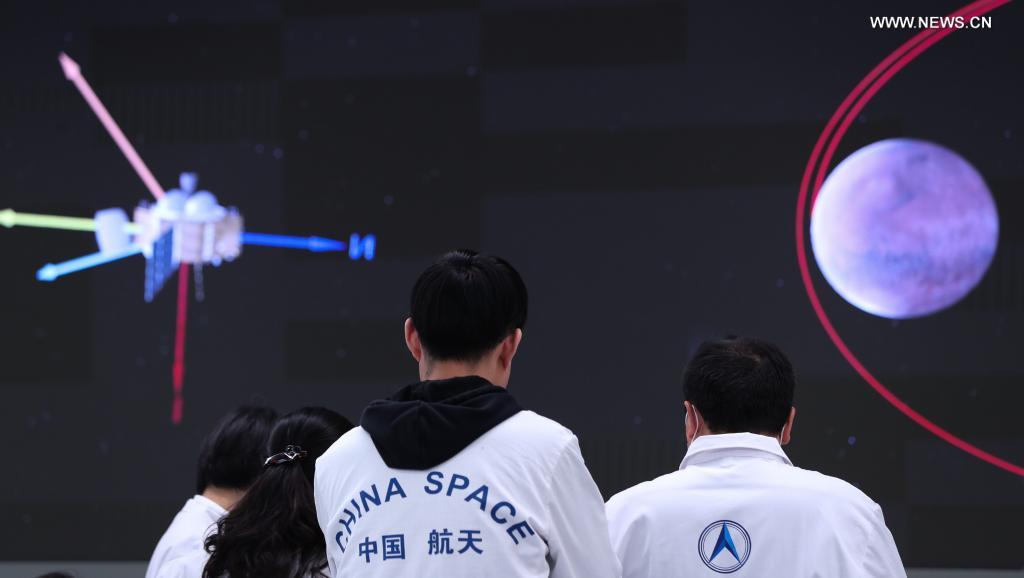
(Photo: Xinhua)
The graphic simulated image taken on May 15, 2021 shows China's probe landing on Mars. The lander carrying China's first Mars rover has touched down on the red planet, the China National Space Administration (CNSA) confirmed on Saturday morning. It is the first time China has landed a probe on a planet other than Earth.
The lander carrying China's first Mars rover has touched down on the red planet, the China National Space Administration (CNSA) confirmed on Saturday morning.
It was the country's first successful attempt to land a rover on Mars.
The Zhurong rover, named after an ancient Chinese fire god, will photograph the landing site, conduct self-corrections and scientific exploration.
The Mars mission was approved in 2016 with the aim of a complete orbit, landing and rover operation. The Tianwen-1 probe consists of an orbiter, lander and rover.
The spacecraft entered the Mars orbit in February after a journey of nearly seven months through space, and spent more than two months surveying potential landing sites.

(Photo: Xinhua)
Technical personnel celebrate after China's Tianwen-1 probe successfully landed on Mars at the Beijing Aerospace Control Center in Beijing, capital of China, May 15, 2021. The lander carrying China's first Mars rover has touched down on the red planet, the China National Space Administration (CNSA) confirmed on Saturday morning.
In the early hours of Saturday, the spacecraft began to descend from its parking orbit, and the entry capsule enclosing the lander and rover separated from the orbiter at about 4 a.m.
After flying for approximately three hours, the entry capsule hurtled toward the red planet and entered the Mars atmosphere at an altitude of 125 km, initiating the riskiest phase of the whole mission.

(Photo: Xinhua)
Technical personnel work at the Beijing Aerospace Control Center in Beijing, capital of China, May 15, 2021. The lander carrying China's first Mars rover has touched down on the red planet, the China National Space Administration (CNSA) confirmed on Saturday morning. It is the first time China has landed a probe on a planet other than Earth.
First, the specially designed aerodynamic shape of the entry capsule decelerated with the friction of the Martian atmosphere. When the velocity of the spacecraft was lowered from 4.8 km per second to about 460 meters per second, a huge parachute covering an area of about 200 square meters was unfurled to continue reducing the velocity to less than 100 meters per second.
The parachute and the outer shield of the spacecraft were then jettisoned, exposing the lander and rover, and the retrorocket on the lander was fired to further slow the speed of the craft to almost zero.
At about 100 meters above the Martian surface, the craft hovered to identify obstacles and measured the slopes of the surface. Avoiding the obstacles, it selected a relatively flat area and descended slowly, touching down safely with its four buffer legs.
The craft's plummet through the Martian atmosphere, lasting about nine minutes, was extremely complicated with no ground control, and had to be performed by the spacecraft autonomously, said Geng Yan, an official at the Lunar Exploration and Space Program Center of the CNSA.
"Each step had only one chance, and the actions were closely linked. If there had been any flaw, the landing would have failed," said Geng.
